Deadlift on Back or Leg Day: Maximizing Strength and Efficiency
Author:
Reviewed by:
(21 years of Oly Lifting experience)
Unlock your full potential by engaging with our experts and community! Have questions about your fitness journey or looking for expert advice on weightlifting techniques? Don’t hesitate — leave a comment below and Sergii Putsov will provide a personalized answer and insights to help you reach your goals.
Torokhtiy is reader-supported. Some links are affiliate links, and we may earn a commission at no extra cost to you. See our disclosure page for details.
The controversy over whether to integrate the deadlift into back or leg day is raging among fitness amateurs and professionals alike.
The debate over whether deadlifts primarily target the back or the legs has resulted in a plethora of training approaches and regimens, all of which strive to maximize strength and efficiency.
The deadlift, being a complex, compound action, trains numerous muscle groups at the same time, and its smart placement in your training routine can have a big impact on your results.
This article delves into the complexities of scheduling the “deadlift on back or leg day,” as well as the ramifications for obtaining optimal muscle activation and development.
We’ll look at the exercise’s biomechanics and how executing deadlifts for back or legs might influence your strength training path.
The deadlift is a complex exercise that focuses on the muscles of the posterior chain, which includes the back and legs. Deadlift on back or leg day can be incorporated, but the selection should ultimately be based on personal preference, training goals, and recovery capabilities in order to enhance strength and efficiency.

What Is the Deadlift?
The deadlift is a well-known weightlifting exercise that is essential for strength and physique. It’s a compound action, which means it activates numerous muscle groups and joints at the same time, making it a highly efficient and effective exercise for increasing overall body strength.
Is deadlift a back exercise? The solution is not as simple as it may appear. While the deadlift works the muscles in the back, especially the latissimus dorsi, rhomboids, and lower back muscles, it also works a variety of other muscles throughout the body.
These include the glutes, hamstrings, quadriceps, and even the forearm and core muscles. This wide use of muscle groups leads to the deadlift’s reputation as a full-body workout.
Because of the wide muscle involvement, the subject of “should I do deadlifts on leg day” is frequently asked. The answer is heavily influenced by your personal fitness objectives and how your body reacts to exercise.
If your goal is to increase leg strength and size, including deadlifts in your leg day regimen can help because the exercise works the hamstrings and glutes. If increasing back strength and muscularity is your objective, placing the deadlift on back day may be more suited due to its stimulation of the back muscles.
In the end, whether the deadlift is a back or leg workout is debatable. It is a flexible movement that can be tailored to the individual’s personal goals and demands. Understanding your specific fitness goals and how your body responds to different exercises can help you decide whether to integrate the deadlift into your workout routine. The deadlift, whether performed on leg or back day, is a potent technique for improving overall strength and muscle growth.
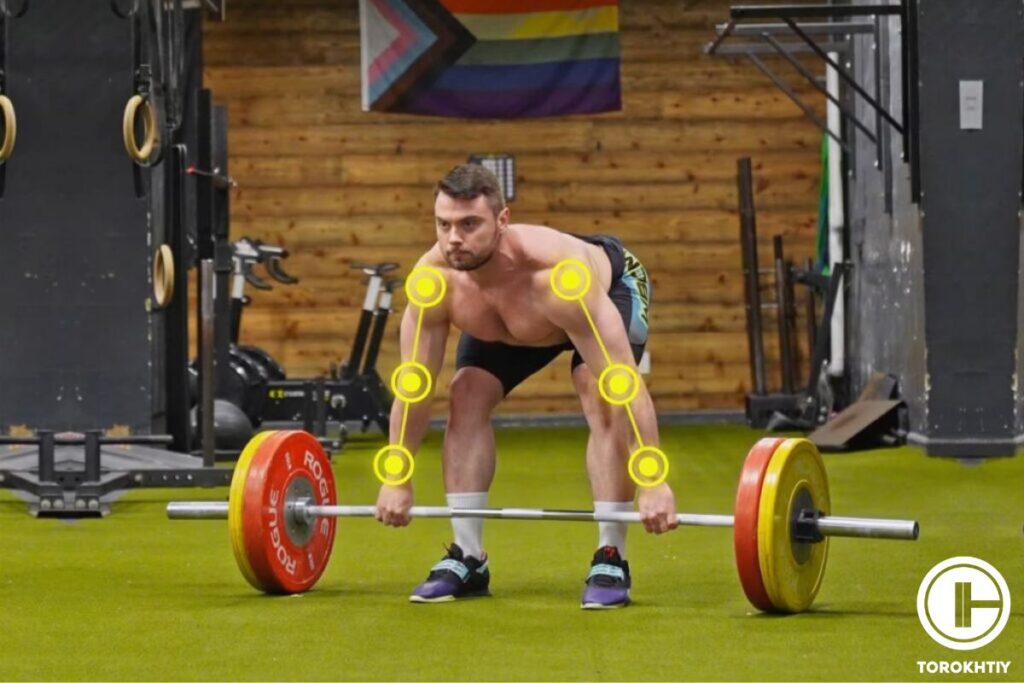
Is Deadlift a Back Exercise?
Deadlifting is a complex exercise that works a variety of muscles across the body, the majority of which are in the back. Here are the key back muscles that are used during the deadlift and how they contribute to the movement:
1. Erector Spinae
This muscle group travels down your spine and contains the iliocostalis, longissimus, and spinalis muscles. During a deadlift, the erector spinae muscles contract isometrically (without altering length) to maintain a neutral spine and to prevent bending under the weight of the load. This movement stabilizes the spine and helps avoid damage.
2. Latissimus Dorsi (Lats)
These are huge muscles in your back that give it a “V” shape. When deadlifting, the lats work to hold the barbell close to your body throughout the lift, giving stability and efficiency.
3. Rhomboids and Trapezius
The rhomboids and trapezius muscles, which are positioned in the upper back, serve to retract and stabilize the shoulder blades during the deadlift. This motion is critical for maintaining a safe and efficient lifting posture.
4. Levator Scapulae
This muscle, which helps lift the shoulder blade, works with the traps and rhomboids to stabilize the shoulder girdle during the lift.
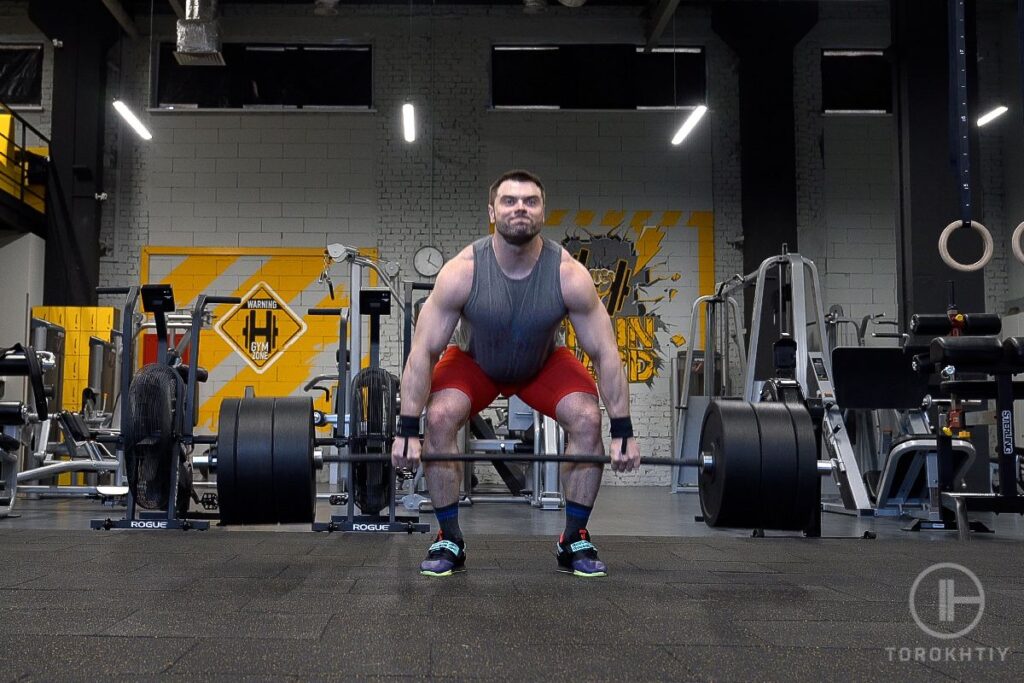
Is Deadlift a Leg Exercise?
The deadlift is not just a back-intensive exercise, but it also activates a variety of lower-body muscles, making it an essential aspect of any leg day workout. The following are the key leg muscles engaged during the deadlift, as well as their responsibilities in the movement.
1. Gluteus Maximus (Glutes)
The glutes are important for hip extension during the deadlift and are often regarded as the strongest muscle in the human body. This means they work to straighten the hip joint when you raise the barbell from the ground to standing.
2. Hamstrings
Located at the back of your thigh, the hamstrings play an important role in hip extension during the deadlift. They, together with the glutes, contribute to propel the action upward.
Follow us!

Free!
Get a 2-week Weightlifting Program as a bonus for the subscription to kickstart your training plan!

Free!
3. Quadriceps (Quads)
These muscles at the front of your thigh are in charge of extending the knee joint. The quadriceps are largely involved in the deadlift during the initial part of the ascent, when the lifter is pushing the barbell off the ground.
4. Adductor Magnus
Located in the inner thigh, the adductor magnus is used in the deadlift to help stabilize and extend the hip.
5. Gastrocnemius
This calf muscle aids in body stabilization during the deadlift, helping to maintain balance and posture during the action.
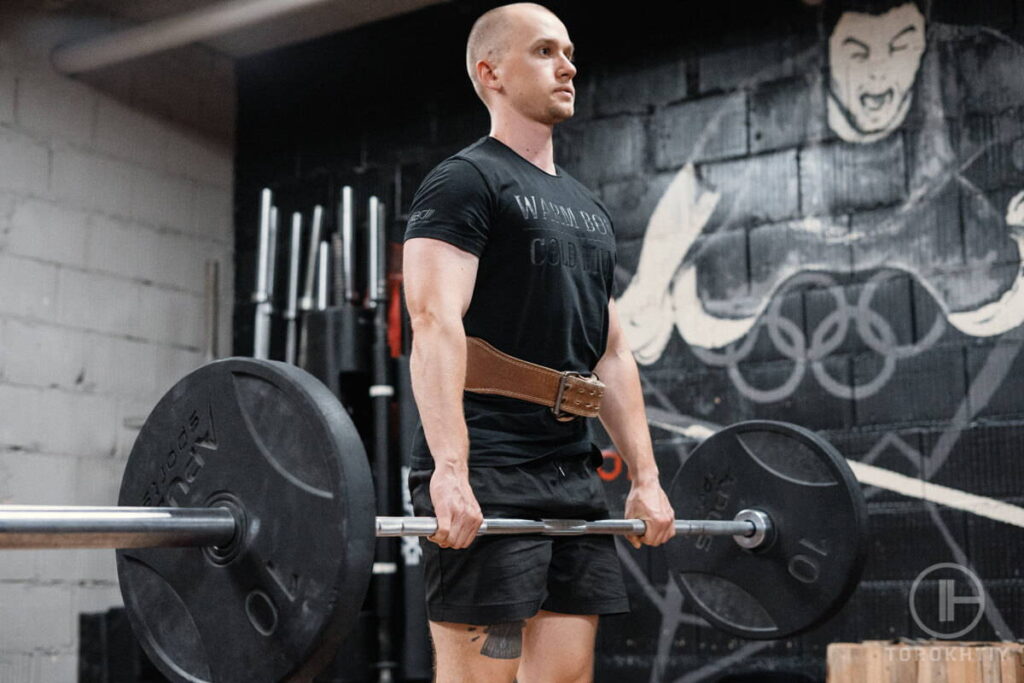
Does the Deadlift Work Better on a Back or Leg Day?
Whether you do deadlifts on back or leg day is determined by your specific fitness objectives, recuperation ability, and overall training program. To assist you make an informed decision, we’ll go through the benefits and drawbacks of incorporating deadlifts on both back and leg training days.
Deadlifts on Back Day?
Positives:
Could be better:
Deadlifts on Leg Day?
Positives:
Could be better:
Finally, the selection is determined by your unique aims and healing capabilities. Consider alternating deadlifts between back and leg days, or perhaps allocating an entire day to deadlifts and associated accessory exercises. As usual, pay attention to your body and make modifications as needed. Consulting with a fitness specialist might give more tailored advice.
Leg Day Deadlift Variations
1. Sumo Deadlift
Your feet are positioned wider apart in this variant than in the standard deadlift, and your hands hold the barbell within your legs. This posture transfers part of the strain from your back to your legs, focusing on the glutes and inner thighs.
2. Romanian Deadlift (RDL)
This exercise primarily works the hamstrings and glutes. Starting from a standing position, you drop the barbell by hinging at the hips and maintaining your legs reasonably straight, then drive your hips forward to return to standing.
3. Single-Leg Deadlift
This exercise targets the hamstrings and glutes while working one leg at a time. It improves balance and stability. This exercise may be done with a barbell, dumbbells, or kettlebells.
4. Trap Bar Deadlift
The trap bar (or hex bar) deadlift requires standing within a specialty bar. The weight is more aligned with your center of gravity with this form, decreasing pressure on the lower back and putting greater focus on the leg muscles. It is frequently seen as a cross between a squat and a deadlift.
5. Deficit Deadlift
In this version, you stand on a raised surface (such as a weight plate or a tiny platform) to expand the exercise’s range of motion. This expanded range of motion might result in enhanced quadriceps and gluteal activation.
Back Day Deadlift Variations
1. Conventional Deadlift
This traditional form of the deadlift focuses on the muscles of the lower back (erector spinae), making it an excellent choice for back day. Lift a barbell from the ground to hip level, then drop it back down, keeping your spine neutral and your back muscles engaged.
2. Snatch Grip Deadlift
Your hand placement is broader in this version, akin to a snatch lift. This modification expands the range of motion and emphasizes the upper back muscles, especially the traps and rhomboids.
3. Rack Pulls
Rather than drawing the weight from the floor, this version includes pulling it from a set of rack pins. The bar’s beginning height may be changed to target different portions of the pull. Rack pulls can help to emphasize the lockout part of the deadlift, which is primarily reliant on the back muscles.
4. Stiff-Legged Deadlift
The stiff-legged deadlift, like the Romanian deadlift, has less knee bend and more hip hinge. This change places additional strain on the lower back and hamstrings. It’s a wonderful exercise for targeting the posterior chain, but it should be undertaken with caution, especially if you have lower back problems.
5. Halting Deadlift
A partial deadlift in which you lift the barbell from the floor but halt at knee level before returning it to the floor. This variant is great for targeting the lower back and can aid enhance off-the-floor strength in your standard deadlift.
How to Add Deadlift on Leg Day Training?
1. Prioritize Deadlifts
Begin your exercise with deadlifts to guarantee you can lift the greatest weight while maintaining good form. The deadlift is a difficult exercise, and doing it first allows you to give it your all.
2. Choose the Correct Variation
Depending on your goals, other deadlift variants may be more appropriate. The traditional or sumo deadlift, for example, is ideal for total lower body activation, but the Romanian deadlift focuses on the hamstrings and glutes more specifically.
3. Manage Your Volume
Because deadlifts are strenuous, you may need to reduce the volume of your other exercises. To minimize overtraining, reduce the number of sets or reps for other strong leg workouts like squats.
4. Plan For Recuperation
Due to the difficulty of deadlifts, extensive recuperation is required. Make sure you have enough rest days after your leg day to allow your muscles to recover and expand. Nutrition and rest are other important factors of rehabilitation.
5. Keep an Eye on Your Form
When performing deadlifts, keep an eye on your form at all times. If you’re lifting heavy, having a trainer or expert gym companion examine your form can help you avoid injury.
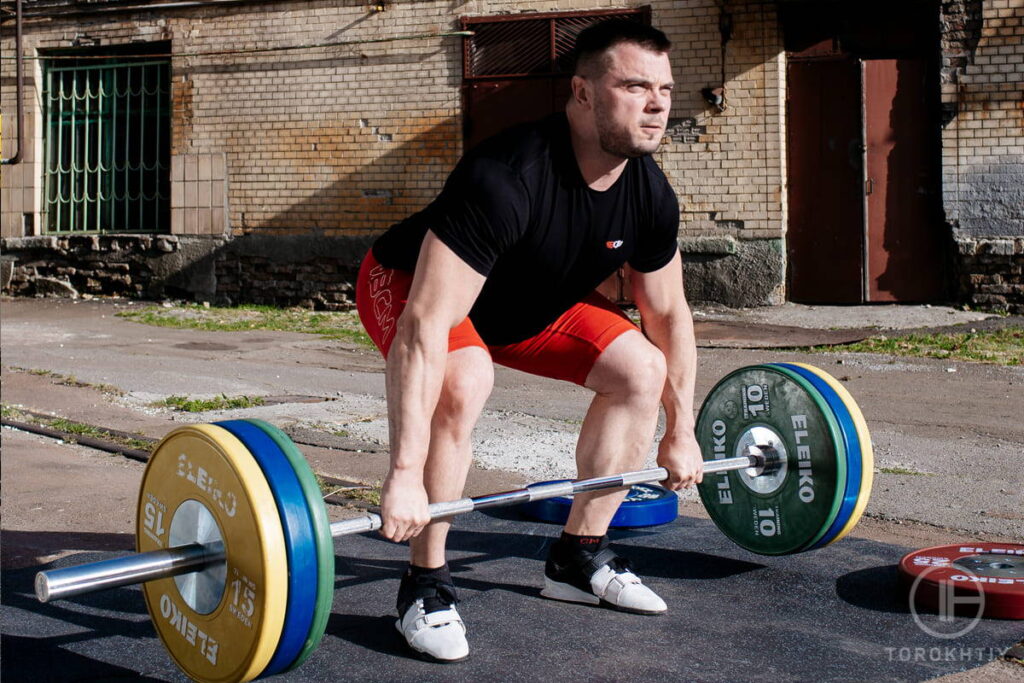
How to Add Deadlift in Back Day Training?
1. Prioritize Your Lifts
Similar to leg day training, starting your exercise with deadlifts is usually effective. They’re a hard, complex workout that needs a lot of energy and concentration. Doing these first will ensure that you keep appropriate form.
2. Choose the Correct Variation
Because it significantly activates the erector spinae, latissimus dorsi, and rhomboids, the traditional deadlift is an ideal choice for back day. Other variants, such as rack pulls or snatch grip deadlifts, can target various portions of the back and spice up your workout.
3. Balance Your Volume
Deadlifts are a strenuous workout that can cause back muscular strain. To avoid overworking your muscles, adjust the volume of your other back workouts. Reduce the number of sets or reps for other high-intensity back workouts, such as bent-over rows or pull-ups.
4. Plan for Recovery
Because deadlifts are so intense, make sure you have enough rest days after your back day to let your muscles heal, mend, and grow. Nutrition and sleep are also important for recuperation.
5. Maintain Proper Form
When performing deadlifts, always emphasize maintaining proper form. If you’re lifting heavy, having a trainer or expert gym companion examine your form can help you avoid injury.
FAQ
Should You Deadlift First on Leg Day?
Yes, deadlifting first on leg day is frequently advised. This is due to the fact that the deadlift is a very hard complex exercise that needs a lot of energy and concentration. Performing it first, while you are freshest, can help you retain perfect form, decrease your chance of injury, and maximize your performance. Individual tastes and training routines may differ, so it’s critical to listen to your body and make adjustments as needed.
Are You Supposed To Feel Deadlifts In Your Back?
Yes, deadlifts should feel good in your back since they work many back muscles, including the erector spinae, latissimus dorsi, and rhomboids. It is critical, however, to distinguish between normal muscular activation and discomfort. Sharp discomfort, especially in your lower back, is generally an indication of poor form or overexertion, and you should cease the activity immediately to avoid damage. Always put perfect form ahead of weight lifted.
Should My Hamstrings Feel Sore After Deadlifts?
Yes, it’s common to feel soreness in your hamstrings after deadlifts, as this exercise significantly engages these muscles. This soreness, often referred to as Delayed Onset Muscle Soreness (DOMS), can occur 24-48 hours after a new or intense workout. However, sharp or severe pain during or immediately after the exercise could indicate a strain or injury and should not be ignored. Always use proper form and avoid overexertion to minimize injury risk.
Conclusion
We hope you have an answer to the question “Should I deadlift on leg or back day?” Both approaches offer distinct advantages, ranging from targeted muscle growth to balanced workout distribution. It’s critical to note that deadlifts for legs or back are a powerful workout that, when done correctly, may considerably increase your strength and efficiency.
We’d love to hear from you: how have you found introducing deadlifts into your routine? Do you prefer leg or back day deadlifting? Please share your ideas and experiences in the comments section below. Your observations may assist others in making better educated judgments regarding their own fitness regimens.
Also read:
- Do Deadlifts Work Abs
- How to Keep Back Straight Deadlift
- Deadlift Everyday
- Deadlift Accessory Exercises
- Deadlift Cues
- High Rep Deadlifts
- What Muscles Does Deadlift Work
- Does Deadlift Work Lower Back
- What Is A Trap Bar
References:
- Electromyographic activity in deadlift exercise and its variants. A systematic review // NIH: https://pubmed.ncbi.nlm.nih.gov/ 32107499/
- Narrative review of injuries in powerlifting with special reference to their association to the squat, bench press and deadlift // NIH: https://pubmed.ncbi.nlm.nih.gov/ 30057777/
- A three-dimensional biomechanical analysis of sumo and conventional style deadlifts // NIH: https://pubmed.ncbi.nlm.nih.gov /10912892/
Why Trust Us?
With over 20 years in Olympic weightlifting, strength training, nutrition coaching, and general fitness our team does its best to provide the audience with ultimate support and meet the needs and requirements of advanced athletes and professional lifters, as well as people who strive to open new opportunities and develop their physical capabilities with us.
By trusting the recommendations of our certified experts in coaching, nutrition, and sports training programming, as well as scientific consultants, and physiotherapists, we provide you with thorough, well-considered, and scientifically proven content. All the information given in the articles concerning workout programming, separate exercises, and athletic performance, in general, is based on verified data.
The product testing process is described in more detail here.
Author: Sergii Putsov
Head of Sport Science, PhD
Best Results: Snatch – 165 kg,
C&J – 200 kg
Sergii Putsov, Ph.D., is a former professional weightlifter and National team member, achieving multiple medals in the 94 kg weight category at national competitions. With a Master’s degree in “Olympic & Professional Sport Training” and a Sport Science Ph.D. from the International Olympic Academy, Greece, Sergii now leads as the Head of Sport Science. He specializes in designing training programs, writing insightful blog articles, providing live commentary at international weightlifting events, and conducting educational seminars worldwide alongside Olympic weightlifting expert Oleksiy Torokhtiy.
Reviewed by: Oleksiy Torokhtiy
Olympic Weightlifting Champion, PhD in Sport Science
Best Results: Snatch – 200 kg,
C&J – 240 kg
Oleksiy Torokhtiy is a professional athlete boasting 20 years of experience in Olympic weightlifting. With multiple European and World titles under his belt, he has showcased his prowess in two Olympic Games (Beijing 2008 and London 2012). Upon concluding his illustrious career, Oleksiy dedicated himself to coaching. By 2022, he had conducted over 200 weightlifting seminars worldwide. He is the visionary behind an international sportswear and accessories brand known for its motto, “Warm Body Cold Mind.” Additionally, he is an esteemed author and the creator of a series of training programs and eBooks.




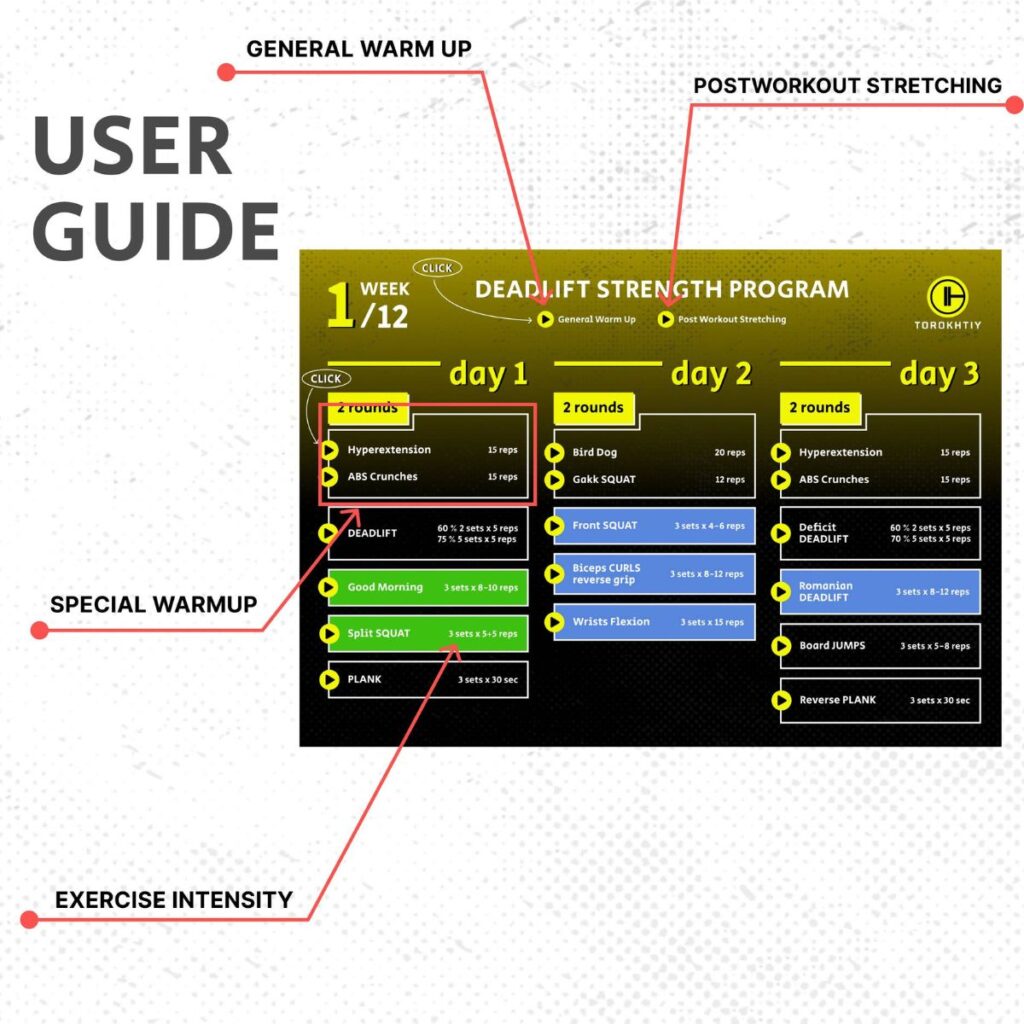
Still have questions after reading our article? Unlock your full potential by engaging with our experts and community! Don’t hesitate — leave a comment below and Sergii Putsov will provide a personalized answer and insights to help you reach your goals.